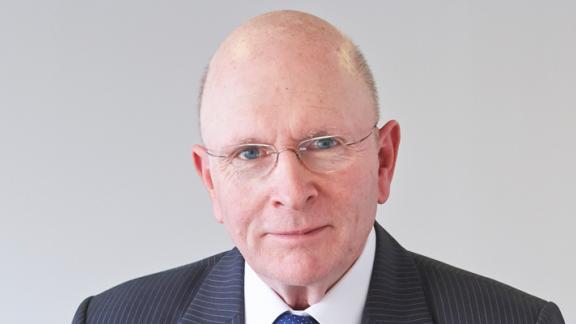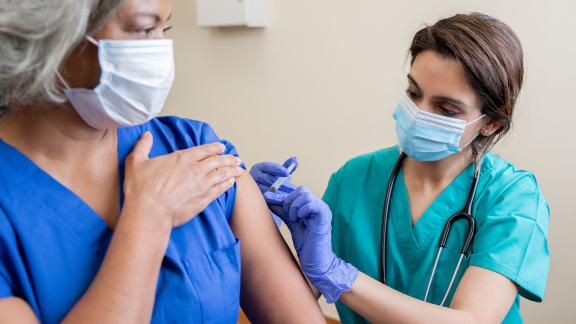How will we cope with the next phase?

We are in a far better place than when COVID-19 first struck. But how ready are we for a second surge, along with issues such as handling winter pressures, re-establishing non-pandemic services and supporting social care? Niall Dickson, chief executive of the NHS Confederation takes a hard look at what lies ahead and the support the NHS needs from the centre.
Everywhere you look, you can see governments, central authorities and experts, scurrying here and there, trying to close off the next loophole through which this clever virus has penetrated.
A second surge of unknown strength now seems highly likely. The service is now moving from a primary focus on restoring services to one where it must continue to restore while preparing for another wave of COVID-19 patients.
As we enter this new phase, we will have to operate in three interlinked domains.
First, there is the reality of what you, as leaders, are having to deal with and prepare for, which will be different in different places and in different parts of the service. Secondly, there is the impact of public attitudes and behaviour – how this will affect spread, how patients access care, what confidence they have in engaging with services, and how the overall reputation of the service will fare in the next few months.
Affecting both of the above, the third dimension is the level of support health and care services can expect from the centre.
A reality check
What, then, is the reality as we contemplate autumn and winter? We are in a much better place than we were when we first had to deal with a coming pandemic. We know how to provide COVID-19 secure services for non-COVID-19 patients. There have been major advances in treatment for COVID-19 patients. There are better and more secure supplies of PPE. We have better but still inadequate testing. Local relationships are more developed, and we have the experience of tackling tough times. A host of service and clinical innovations have changed the way care is provided.
The restoration of services curtailed earlier in the year is well underway. Emergency department attendances are back to 95 per cent of normal levels, there are two and a half times as many routine operations, and diagnostics numbers are growing significantly. Mental health, primary care, and community services have made remarkable progress towards former levels of activity.
However, at the Confederation, we have been making the case as strongly as we can that for some, the restoration targets set in the Phase 3 letter will be hard to achieve. This is not because of incompetence or lack of will, but because of the obvious constraints everyone faces, which, in some cases, are compounded by local circumstances. There should be no unwillingness to embrace the idea of service restoration, but ours was and remains a plea for realism.
The challenges ahead are clear. Last time around when the virus hit hard, there was frantic activity in parts of the service and an eery calm in others. It will not be like that this time.
Staffing has always been an issue and it will become more of one, if/when the second surge appears. PPE and social distancing necessarily affect productivity, and it will be different in different specialties and will be differentially affected by the local physical infrastructure. Flu, norovirus, and all the other joys of winter will affect how services can cope. Fewer outdoor and more indoor contacts will help spread the virus, as will the necessary return of schools and universities. Running COVID-19 and non-COVID-19 services simultaneously, and as near normal as possible, will be more demanding than first time round. In hospitals, it will be essential to create effective flow with measures such as “111 first” to help prevent unnecessary admission, and discharge to assess to avoid any blockages. Beyond hospitals, the knock-on effect of increased morbidity may be less obvious, but we know from the first time around, it is no less real.
The centre – governments, their expert advisors, and the regulators – can help. By providing some flexibility about what can be achieved, clarity about funding for the next six months, and actively resisting attempts to impose bureaucratic regulatory impediments, they can make a difference. This will be a new phase, and clear support for the NHS as it embarks upon it will be essential.
Alongside this, there is an urgent need to address the ongoing crisis in social care and the fragility of the care market. We have been promised a winter plan for England, but nothing is yet forthcoming. They could start by making PPE free and setting out a proper funding plan. If necessary, they can erect a hard ring fence around any new funds to make sure every penny goes to social care, and they must make sure that free testing is available in home care as well as care homes, wherever and whenever it is needed.
Perhaps we should ask whether there is more we in the NHS can do. There are wonderful examples of NHS organisations supporting social care providers with PPE, as well as clinical support and expertise – great examples of integration in which clinical and other staff are not constrained by organisational boundaries. As one chief executive put it, where the NHS has the expertise to offer support virtually or in person, we should regard these social care services as extensions of our own.
Getting the message right
The second dimension is communication – one of the most potent weapons in the war against the virus and one that has been poorly deployed. This has not been helped by the unnecessary differences in guidance across the UK’s four nations. There have been local outbreaks where we could have been quicker to empower and work closer with local public health officials, but that is something different. It remains unclear why the four jurisdictions have not managed to work together, given they have access to the same science, and largely the same scientific advisors. If they had been political allies instead of political foes, we would surely not have the confusing differences in guidance we have today.
Instead, we need clearer messaging and much more of it. The governments across the UK should be asking the best minds in the advertising industry to produce (at no cost!) the most persuasive and engaging public health messages to help change behaviours. With cross-party support they could run on social media, on the BBC and all media outlets, at no charge to the public purse.
At the same time, there is a need to make sure patients can access the services they need and are supported in navigating the new ways care and treatment are being provided. There is still understandable public anxiety. In May, The Health Foundation found that the overwhelming concern when considering a visit to a healthcare setting was fear of being exposed to coronavirus (76 per cent for hospital, 63 per cent for a GP practice).
We need to be able to reassure and, for example, continue the improvements in children’s attendance, and try to encourage alternatives to emergency departments for those who do not need that type of care. We need to spread the message that GPs are offering safe face-to-face care, alongside virtual consultations, and in so doing, transforming the way many of us cared for.
Again, a touch of realism here would help. The NHS did not close down during the first surge of the pandemic – millions of patients were still treated and cared for – but some services were constrained or suspended. The result is a massive backlog, which cannot be wished away. There is a wealth of affection and support for the service, but reputations are long-earned and quickly lost, and we need public and political understanding.
The five Rs
For representative bodies like the Confederation, this is a time to listen even more than ever to what our members are saying. They may not always provide us with a simple or even a consistent message, but if we are reading it right, there are five Rs that will determine whether the NHS will prevail in this next phase as it did in the last:
- Relationships – local collaboration will be essential; now is the time for STPs and ICSs to come into their own in supporting this, working with commissioners and providers.
- Regulation – reduce to a minimum.
- Resources – make sure there are efficient supply chains and clear funding streams to enable the service to flex again.
- Realism – politicians, regulators, and the public to understand what is and what is not possible.
- Right communication – we need consistent, repeated, and loud messages on preventing spread and accessing services.
Niall Dickson is chief executive of the NHS Confederation. Follow them on Twitter @NHSC_Niall and @NHSConfed



